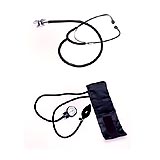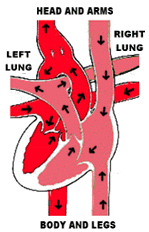Explaining the Skill or Concept
Set goals for your explanation.
Define success in terms of what you want
the students to be able to do.
Teach toward your measure
of success.
Avoid the “enemies of understanding,”
mistakes that make learning difficult.

GOALS
FOR EXPLANATION
ENEMIES OF UNDERSTANDING
STRATEGIES
FOR SUCCESS
On the left below is the original explanation of the circulatory system. On the right is our revision.

|
THE CARDIOVASCULAR CIRCULATORY SYSTEM |
HOW BLOOD CIRCULATES THROUGH THE BODY |
||||
|
Now let’s determine how the circulatory system works. It’s an amazing system that really should win some sort of design award. The heart is the engine that keeps this system going, which is essential to the health of the entire body. Within the heart are four chambers. The four chambers of the heart are the right and left atria(from the Latin atrium, meaning “corridor”) and the right and left ventricles(from the Latin ventriculus, meaning “a little belly”). In one heartbeat, deoxygenated blood is pumped to the right side of the heart and from there to the lungs where it will get more oxygen. With that same beat, blood that has picked up oxygen from the lungs enters the left side of that organ, and is pumped out to organs and tissues where it deposits the oxygen. |

Doctors use these devices to measure blood pressure. |
Blood circulates through the body the way hot water circulates through the radiators in a house. The pump that keeps blood circulating is the heart; the pipes that carry the flow of blood are the veins and arteries. Together, the heart, arteries, and veins are the body’s circulatory system. In a single heartbeat, the left side of the heart pumps “fresh” oxygen-rich blood from the lungs out through arteries to the organs and tissues of the body. In the tissues, red blood cells release the oxygen and pick up carbon dioxide. During the same beat, the right side of the heart pumps “used” blood from the tissues of the body to the lungs. In the lungs, the red blood cells release carbon dioxide and pick up more oxygen. |

The heart,
|
||

Popup annotation JavaScript by Erik Bosrup, with portions by Dan Steinman
Free JavaScripts provided by The JavaScript Source
STRATEGIES FOR SUCCESS
KRAFT
& KRAFT HOME
SERVICES
PROJECTS
& PUBLICATIONS
HINTS
& TIPS
ERIC
KRAFT